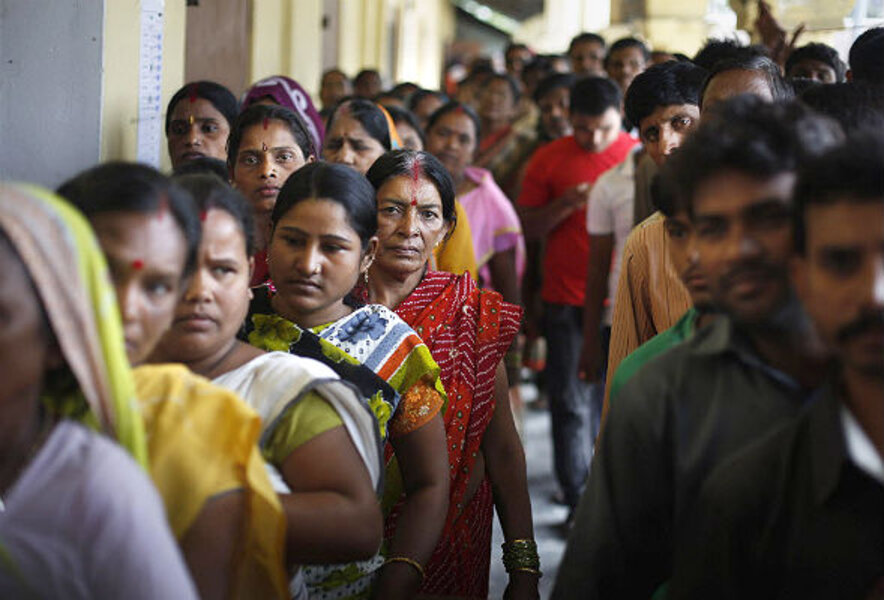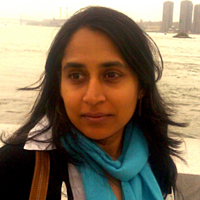India's election: Five questions on the world's largest democracy
Loading...
| Mumbai, India
National elections are underway in India, the world's largest democracy. This once-in-five-years event is known as the greatest democratic show on earth because of its sheer scale and managerial complexity. And this time could be pivotal: after eight years in power, the ruling coalition appears headed for a fall.
Over the space of more than a month, approximately 814 million voters across India are eligible to vote for their representative to the Lok Sabha, or House of the People. It will be the 16th parliament since India won independence from Britain in 1947.
The ruling United Progressive Alliance, a coalition led by the Congress Party, has run into a series of scandals and economic roadblocks in the last few years. Polls show that most Indians are looking for a change, and that the opposition Bharatiya Janata Party (BJP) and its prime ministerial candidate, Narendra Modi, stand to benefit.
Here’s what is happening and what to watch for:
How does India’s political system work?
Under India’s first-past-the-post parliamentary system, a party must control over half the 543 Lok Sabha seats to form a government on its own. No single party has managed to do that since 1984, so governing alliances must be formed between the six national and 47 state parties. States with larger populations thus wield a lot of power, chief among them Uttar Pradesh, which gets to send 80 representatives to the Lok Sabha. Coalitions led by the Congress Party and BJP have alternated power in the past two decades.
How do you hold elections in a country with 1.2 billion people?
With a staggering amount of manpower. At the cost of roughly $2 a voter, India will deploy 10 million election officials, including temporary workers and army soldiers, at 930,000 polling stations. Ballots will be cast via 1.8 million electronic voting machines.
Given this scale, the election is spaced out over five weeks, with nine polling days through May 12. The long gaps allow paramilitary forces to be shifted from place to place to provide security at polling stations. The dates are also fixed around various local festivals and school schedules since public school teachers make up the bulk of election volunteers, a paid position.
India's geography poses its own problems. In the past this meant using boats and elephants to get ballot boxes and officers to Himalayan mountain districts and camels to transport voting machines in the deserts of Rajasthan. Then there are the challenges of securing the vote in regions like Kashmir, Uttar Pradesh, and areas of central India plagued by a Maoist rebellion. In 2004, officials were taken to Maoist areas by helicopter in the morning and returned immediately after polls closed.
The main goal, says former chief election commissioner T S Krishnamurthy, is to ensure that voters, especially minority or lower-caste voters, aren’t intimidated or prevented from voting. “We even shift the local police chief if we think he is too close to a certain party,” he said. Officials also monitor campaign expenditures, media coverage, and whether candidates stick to a code of conduct that includes a ban on hate speech.
What accounts for the success of India’s elections?
The Election Commission’s constitutional status is crucial, says Mr. Krishnamurthy. The commissioners are scrupulously independent, well paid, and can only be removed by impeachment. After poll dates are announced, the government is prohibited from making new policies; the commission can block or suspend such policies and other government initiatives if it believes they may influence voters. In April, the commission suspended a hike in natural gas prices scheduled to take effect April 1, even though the policy had been cleared last year.
However, what the commission cannot do is prevent crooks from being elected, Krishnamurthy notes. Indian legislatures are notorious for the number of members who face legal proceedings. The Association for Democratic Reforms, an independent Delhi-based campaign group, says that of the candidates competing in today's first round, 9 percent face criminal cases, based on their own affidavits. Roughly 30 percent of sitting lawmakers also face criminal cases.
What makes this election different?
A number of novel factors are in play. A “youth bulge” in the population means a high proportion of first-time voters, though youth turnout tends to be low. Increasing urbanization makes the urban and semi-urban votes more important. Then there’s the new Aam Aadmi Party (AAP), which grew out of a grassroots anti-corruption movement and whose unexpected success in local polls in Delhi last December has inspired it to register candidates for 70 Lok Sabha seats across the country.
Analysts say the AAP will likely win only a handful of mostly urban seats. Still, it has played a big role in attracting new kinds of candidates into party politics. For the first time in years, educated professionals who usually disdain electoral politics are standing for the AAP. It has also played an important role in putting the anti-corruption and transparency campaign on the national agenda. Coincidentally, for the first time Indian voters will have the option to reject all candidates on the ballot: a new option is None of the Above.
Which way is the political wind blowing?
India’s complex electoral math and the difficulty of accurately polling more than 800 million voters makes it hard to call any election. But recent polls show that voters across the country are tilting toward the BJP and to Mr. Modi, a Hindu nationalist who styles himself as a decisive, economic policymaker with a rags-to-riches backstory. That tilt is being seen not only in urban areas and among upper Hindu castes that are traditional BJP strongholds but also, to a lesser extent, among lower castes and the rural poor. The latter usually favor Congress and regional or caste-based parties. Young voters appear to be lukewarm towards the Congress Party's reluctant leader Rahul Gandhi.
Indian pre-election polls have been proven wrong several times before. This election is different, say election experts. They argue that the past two elections were driven by local issues and candidates, and thus hard to poll. This year voters appear to be focused on national issues like economic growth, inflation, and corruption – pointing to the possibility of a rare split between local and national party preferences.
“As in more developed countries, things may be going beyond caste and community-identity politics to broader issues of development, at least to a small extent,” says Eswaran Sridharan, academic director of the University of Pennsylvania Institute for the Advanced Study of India in New Delhi. The AAP's rise is an example of this trend: it isn't aligned to any caste or community. “Broadly speaking, we might be seeing the very beginning of contests on national economic policy,” says Mr. Sridharan.








